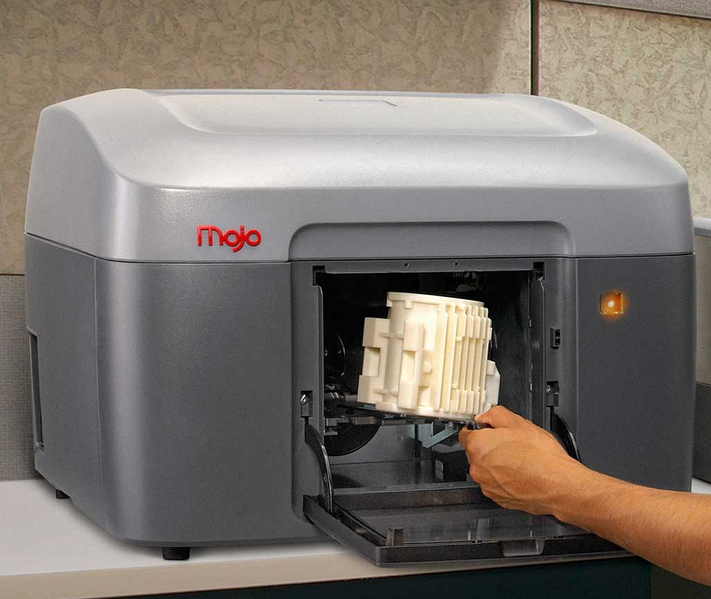Editor’s Note: The following is the latest in a series of periodic articles examining business trends and their effect on industries in the future.

By now, most everybody has seen something about three-dimensional printers — a news article, a YouTube video, perhaps even a live demonstration at a trade expo.
3D printers work much the same way as traditional printers. But instead of spraying a single layer of toner on a sheet of paper, they lay down multiple layers of substances such as plastic resin until the layers add up to an object. Depending on how they are programmed, 3D printers can product objects of any shape, on the spot whenever they are needed.
In the coming decade or so, this is going to have widespread implications for industry. And as the technology improves and as 3D printers become more widespread and more affordable, it may revolutionize the way products make their way to consumers.
The Post-Industrial Revolution
In the original Industrial Revolution born at the end of the 19th Century, improvements in energy production and manufacturing organization led to the mass production of consumer goods in assembly lines. This changed the entire landscape of modern societies, as workers migrated from rural areas to cities to work in factories.
The development of the 3D printer could have similar society-changing consequences. Once they are economically viable and widely use, they will allow goods to be manufactured closer to where they will be purchased or consumed — often right inside the home itself!
Homes that are equipped with 3D printers, raw materials and design software will be able to build everything from clothing to consumer electronics, from cookware to furniture. And the places that are now used to manufacture these products eventually will become obsolete.
Smaller, Localized Factories
Even those goods that can’t be built practically in the home can be produced more locally because there will no longer be as many economies of scale to support large, centralized manufacturing plants. For example, today cars are built in only a handful of cities. But large 3D printers can allow vehicles to be built in every city and town. And replacement parts can be built right at dealerships or repair shops.
Another change will be that it will be much easier to customize products because changing design won’t require retooling an entire assembly line. All it will take will be reprogramming the software. The Industrial Revolution was built around creating the same identical product over and over again, but in the post-industrial revolution, consumer goods will only be limited by their maker’s imagination.
Think of the long-term consequences this could have on supply, manufacturing and retailing. The way most consumers access the products and services they want already has been radically altered by the rise of the Internet. The proliferation of 3D printing will only accelerate the desintigration of the traditional supply chain.
Reshoring Manufacturing
The likely will be international consequences as well. For example, many of the products that are produced in China with cheap labor will no longer be cost-effective because 3D printing will allow these to be built more cheaply and closer to the point of consumption.
While not all products lend themselves to 3D printing — we will still have to grow and raise food, for example — many of the hard consumables that make up much of the economy can and will be built and delivered differently.
And it’s not some science fiction scenario of the future, either. The auto, aerospace and medical technology industries already are using 3D printers to make light and strong components.
The next decade will be an exciting time for industry as the impact of 3D printing technology changes the way many products are manufactured and delivered to consumers.
